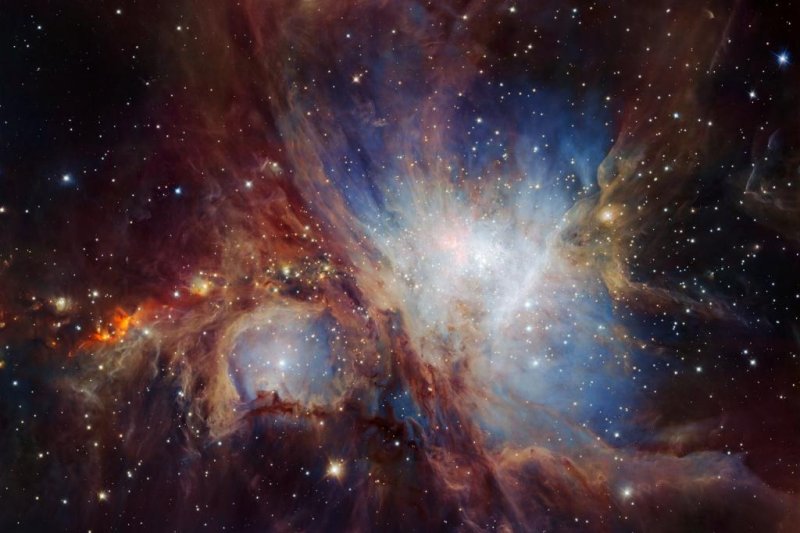New images from the European Southern Observatory reveal the deep interior of the Orion Nebula. Photo by ESO/VLT
SANTIAGO, Chile, July 12 (UPI) -- The Very Large Telescopes's HAWK-I infrared instrument has revealed the deep interior of the Orion Nebula in greater detail than ever before. The new infrared imagery has offered astronomers the deepest glimpse yet of Orion's center.
In addition to setting records, the VLT images have yielded surprises. Orion's interior hosts many more brown dwarfs and isolated planetary-mass objects than astronomers expected. The realization is forcing astronomers to rethink their models of the nebula's stellar evolution.
Orion hosts a significant number of hot young stars, which flood the nebula with intense ultraviolet radiation, causing pillars of gas to ionize and glow intensely. This luminosity allows the nebula to be seen with the naked eye as a faint fuzz along Orion's Belt.
Its close proximity to Earth and rich population of stars make Orion an ideal place for astronomical exploration. It serves as a laboratory for testing various theories of star formation.
"Understanding how many low-mass objects are found in the Orion Nebula is very important to constrain current theories of star formation," researcher Amelia Bayo said in a news release. "We now realise that the way these very low-mass objects form depends on their environment."
Bayo is an astronomer with the University of Valparaíso in Chile, as well as the Max-Planck Institute of Astronomy in Germany.
An important part of understanding the star formation process is determining the proportion of differently massed stellar objects, the ratio of low- to high-mass objects. The latest imagery shows Orion's interior features a higher proportion of low-mass objects than other regions of the nebula.
The findings -- detailed in the Monthly Notices of the Royal Astronomical Society -- also suggest Orion may host a larger number of planet-sized objects than previously thought, but scientists don't yet have hard evidence of the fact. New observational tools like European Extremely Large Telescope could change that, however.
"Our result feels to me like a glimpse into a new era of planet and star formation science," said lead study author Holger Drass, an astronomer at the Pontifical Catholic University of Chile. "The huge number of free-floating planets at our current observational limit is giving me hope that we will discover a wealth of smaller Earth-sized planets with the E-ELT."















